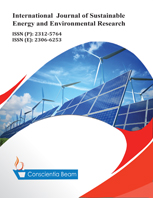Investigating Threats to Power Plants Using a Carver Matrix and Providing Solutions: A Case Study of Iran
DOI:
https://doi.org/10.18488/13.v11i1.2965Abstract
This paper examines Iran's power plants as potential targets of enemy groups. It identifies the most plausible targets and suggests preventive strategies to counter the threats. There are different models to assess the threat to potential targets. A commonly used model in various fields is the Carver matrix model, which, due to its comprehensiveness, has been used to assess power plants as targets of enemy action. The Carver model has six main factors, each of which is assigned a certain coefficient. To evaluate Iran's power plants as targets, information on their capacity, location, number, age, and fuel type is collected, as well as information on the various threatening groups based around Iran. Using the information on the power plants and the specified coefficients of the Carver matrix, the Iranian power plants have been evaluated as targets. The results of this study indicate that Iran's largest and most sensitive power plants are highly attractive targets for enemies.

